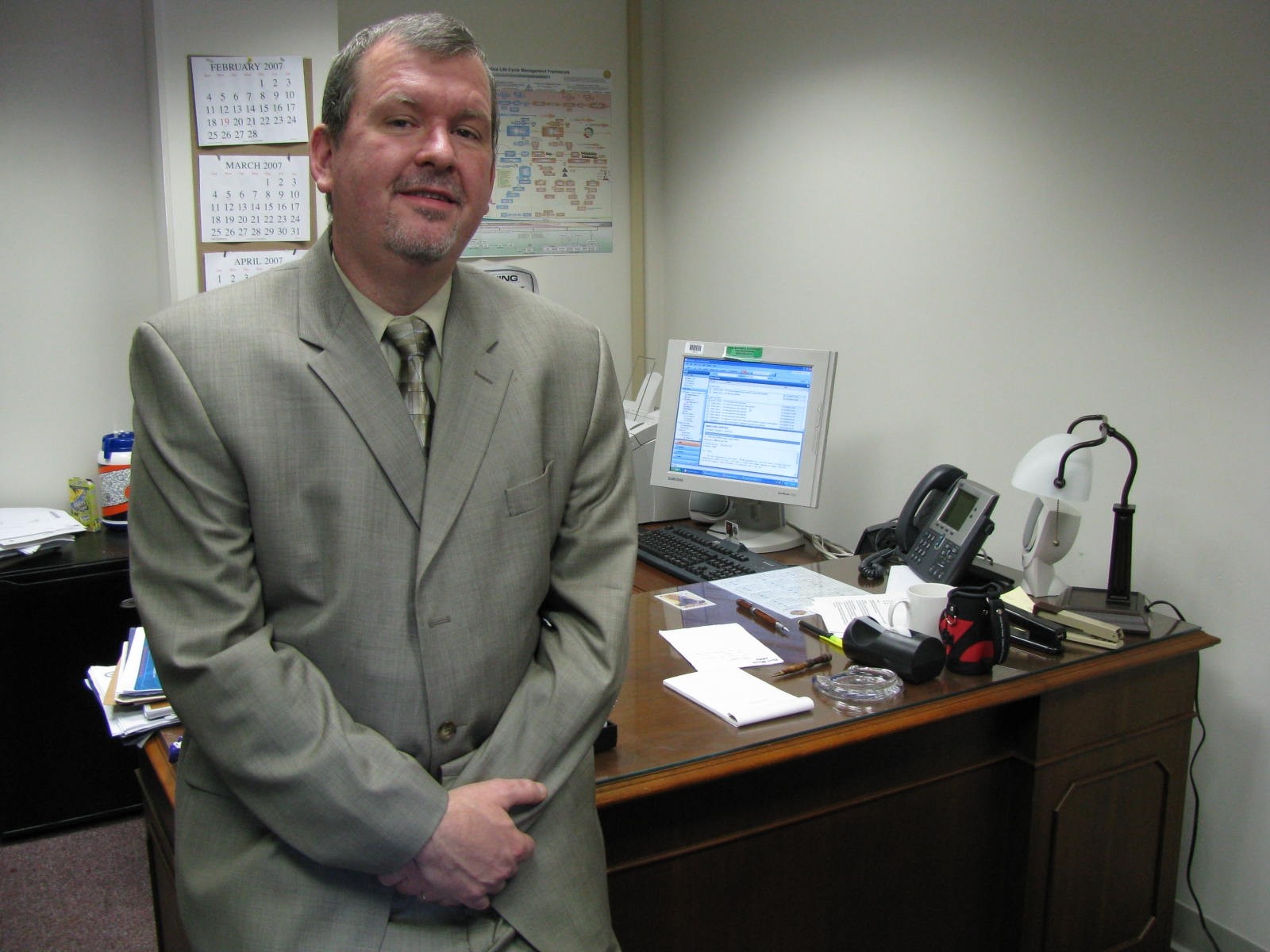
Two years ago, Bradley Thomason's job didn't exist.
But today, his job - leading the Information Operations Joint Management Office for the Department of Defense's Joint Forces Command - touches every combat command and joint war-fighting capability.
"We work in support of the Joint Warfighting Center at the Joint Forces Command," Thomason said. "Our job is to execute all the Information Operations programs for the Joint Warfighting Center. The Joint Forces Command makes sure all forces are trained, equipped and ready to fight. In support of that mission, we provide non-kinetic warfare operations for the combat commands."
Since 2006, Thomason, who works out of offices at both AMRDEC and the Joint Forces Command in Suffolk, Va., has led efforts to establish joint Information Operations in the areas of electronic warfare, computer network operations, military deception, operational security and psychological operations. And, with JFCOM's IO network growing in both capacity and the number of government customers it serves, Thomason was recently recognized with the Joint Civilian Service Commendation Award, presented by Maj. Gen. Jason Kamiya of Joint Forces Command.
"Receiving the award was very flattering. It surprised me," Thomason said. "It recognizes a lot of work that has really made a difference for the combat commands. There isn't a blueprint anywhere of someone doing this before us."
Under Thomason's direction, nine AMRDEC workers and about 90 employees representing the Army, Navy and Air Force work in offices at Redstone Arsenal and in Suffolk, Va., Tampa, San Antonio, Baltimore and Las Vegas "to provide a truly joint effort, a truly distributed (computer networked) program involving all services. In two years, we went from being nothing to being a worldwide operational network that annually supports over 60 classified events."
IO employees work in every major theater, performing tasks involving everything from mission rehearsal to testing capability. The organization has 40 sites, but that will grow to about 100 when at full capacity.
"We provide the support capability that allows Information Operations to be integrated into combat commands," Thomason said. "Our team provides support so that combat commands can work jointly in testing methodologies and capabilities used to go in and defeat the threat."
These joint tests, training and experimental opportunities are done with the use of computer network simulations rather than with the actual movement of Soldiers and equipment, thereby minimizing testing and training time, speeding up processes, reducing costs and reducing risks. And, since they are joint operations, there is also a reduction in the duplication of efforts and an increase in unity of effort throughout DoD.
Thomason has worked at Redstone Arsenal for about 20 years, 16 of those with the Simulation and Training Command's Threat Systems Management Office. He was working for Aviation and Missile Research Development and Engineering Center when he was asked by JFCOM to stand up IO capabilities. That led to the formation of the IO Joint Management Office under JFCOM.
"We have several projects, but our most significant program is the Information Operations Range," Thomason said. "This is a worldwide classified network that allows us to provide real time support to combat commands during simulations and tests.
"For example, we can have a non-kinetic weapon in one area of the world firing at simulated targets in another area, and we can provide information to the combat command in real time. The command can use that information to test even more capabilities and rehearse actual operations. We will set up the test range for the command and they can use it to rehearse different scenarios so they have an idea of what would happen in real combat."
The IO range is a valuable tool for joint research and development, modeling and simulation, developmental and operational test and evaluation, technical analyses, training, battlefield and technology demonstrations and other computer-based missions.
Before the IO range was established, executing an exercise to support the combat commands could take up to nine months, and involve building test equipment and hardware along with a testing environment. With the IO range, the test environment is always in place, cutting preparations for a testing or training exercise to a few weeks and reducing costs that once ranged between $250,000 and $1 million to $50,000 to $100,000.
IO also provides a program called VISION (Virtual Integrated Support for the Information Operations Environment) that supports all command operations.
"A lot of people call us a test network because we test a lot of different things and we do support a lot of programs in the training center," Thomason said. "But we actually support a system's entire life cycle. We can provide support for all the life stages of a system used by a combat command. VISION is an acquisition program where we build all of the tools needed for integration, analysis, planning and assessment of systems."
Though IO was developed in support of JFCOM's goal to sustain the operational readiness and rapid availability of the military services and to provide capabilities needed in joint operations, Thomason said JFCOM's IO will continue to expand outward to other government users.
"We're still a long way from being complete and where we want to be," he said.
"Our investments have been with the combat commands and services to date. But, at full capacity, the range of the network will extend worldwide and to all commands and to NATO and our international partners. We also envision providing IO services to other agencies both within DoD and without, such as the FBI and the State Department."
But the organization will continue to have a small footprint, a lean and mean philosophy of operation.
"We will always provide support in a cost effective manner," Thomason said. "We will always run the network the way it was envisioned - distributed in nature."

Social Sharing